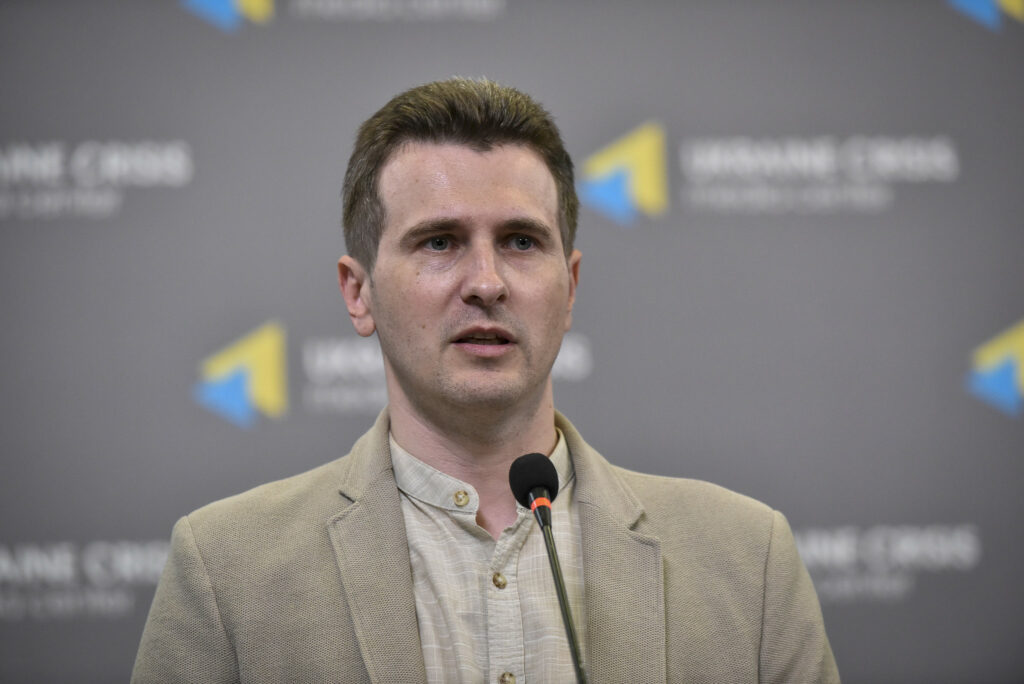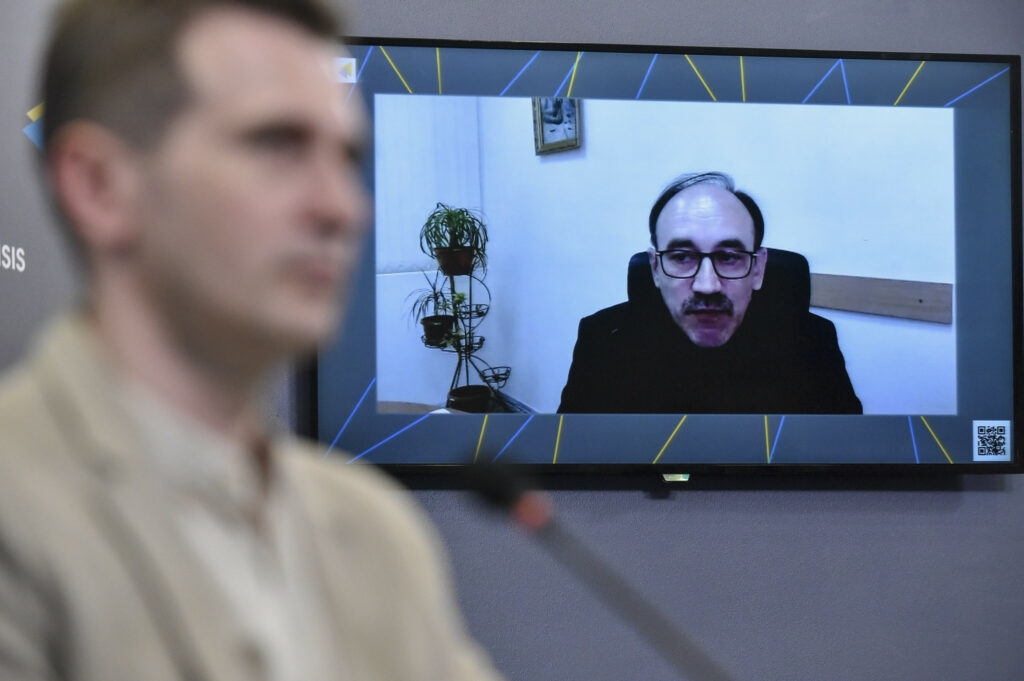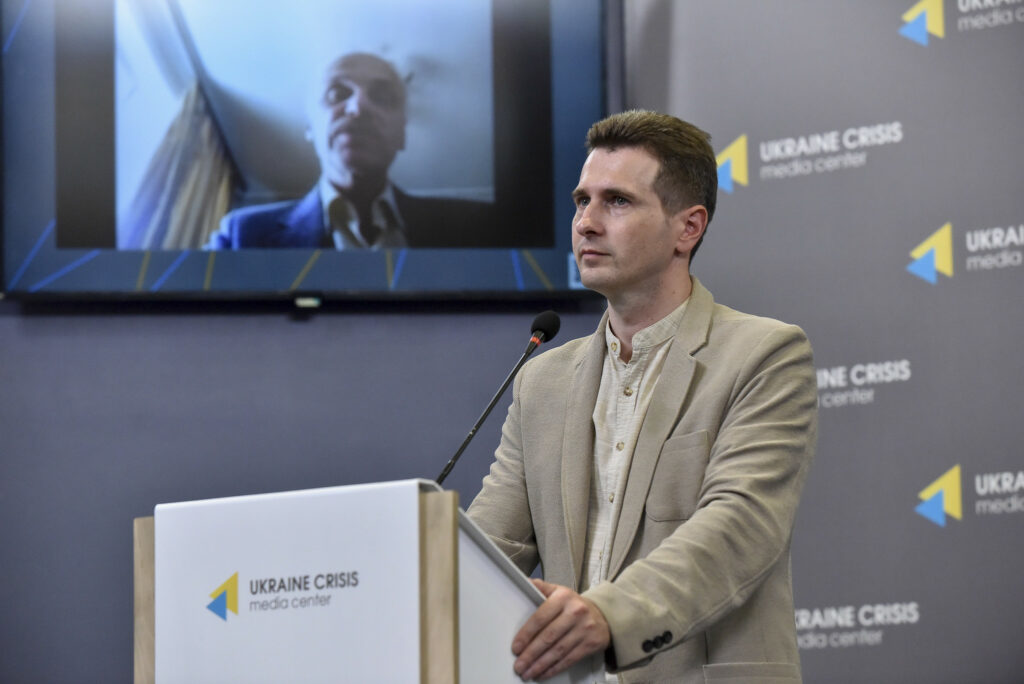Ukraine Crisis Media Center presented its research “Pro-Moscow Myths of the Southern and Eastern Regions of Ukraine.”
Opening the event, the project coordinator, candidate of historical sciences Ihor Stambol emphasized that myth is a complex concept. It is not about the gods, as was the case in ancient Greece.
It is about a certain statement, which is obviously either a falsification or an interpretation of a phenomenon or idea with a clear pro-Russian bias.
“To identify the most common myths we turned for advice to journalists, historians, and public activists. We also involved museum employees, librarians, local lore experts – everyone who is connected with the local narrative and, accordingly, knows it better than ordinary citizens,” he said.
Thus, an expert survey on several issues was conducted in the Odesa, Mykolayiv, Zaporizhzhia, Dnipropetrovsk, Kherson, Donetsk, Luhansk, Kharkiv regions and the Autonomous Republic of Crimea. The organizers of the survey asked the experts to answer the following questions:
What are the most common versions of Russia’s and/or the USSR’s and/or the Russian Empire’s contribution to the development of the region? Who is considered the biggest contributor to the development of the region? What collective or legendary image of local success does local history convey? Which pro-Moscow myths are the most persistent?
In the first part of the presentation, the survey findings for four regions were presented. In the first case, Ihor Stambol refuted the myth that Crimea is allegedly the cradle of Russian Orthodoxy.
“First of all, there were Askold’s and Olha’s baptisms of Rus’ before Volodymyr. Secondly, Prince Volodymyr himself was most likely not baptized in Chersonese. In addition, Christianity came to Muscovites from Kyiv and not from the peninsula,” explained the project coordinator.
As for the myth that “Crimea has always been Russian, Khrushchov illegally gave it to Ukraine”, although the Constitution of the USSR did not provide for the transfer of individual regions between republics, 7 border regions (Murmansk, Bryansk, Novgorod, Pskov, South Sakhalin, Konigsberg, Belgorod) were transferred according to a similar scheme.
In debunking pro-Russian myths about Mykolayiv, the host was joined by Yuriy Kotlyar, doctor of historical sciences, professor of the history department of the Black Sea National University named after Petro Mohyla.
“When Russian myth-making says that Russian civilization came to this territory, it should be taken into account that there have been various civilizations here for a long time. As for the Greek civilization sites in Mykolayiv, there was a unique settlement of the Belozerka culture – Dykyi Sad (Wild Garden). It is unique in its characteristics, because it arose in the 13th century BC and was even older than Troy. According to modern researchers, this is the city of the Cimmerians, about which Herodotus also wrote,” said the Mykolayiv scientist.
His colleague, doctor of historical sciences, professor of the department of world history of the modern and modern times of the Ukrainian Catholic University, Vadym Zadunaiskyi, focused on the pro-Russian myths of the Donetsk region.
According to him, the northern and partly northwestern part of the Donetsk region is connected with the resettlement of Cossacks and the settlement of these regions by Cossacks of the Sloboda regiments – first of Kharkiv, and later of Izium regiments. Even the modern city of Sloviansk was one of the key towns of this regiment. On the other hand, the southern, central areas and part of the eastern areas of the Donetsk region were inhabited mainly by Zaporozhzhian Cossacs.
“Later, even after the elimination of the Cossack Hetmanate, Ukrainians still dominated there. This was recorded by the first imperial census. It revealed that 61.3% of the population were Ukrainians,” noted Vadym Zadunaiskyi.
As for Zaporizhzhia, Ihor Stambol cited facts that dispel pro-Russian narratives. One of them is the statement that it was the Soviet government that brought industrialization.
“Zaporizhzhia is such an industrial center and many things were really created during the Soviet times. However, it is necessary to find out on what basis it was created. The Soviet government appropriated private factories and reestablished production. And this was still the beginning of the 20th century, when the area was oriented towards agriculture. How could such enterprises emerge? One of the first factories belonged to Germans, whom we call colonists, but in fact they were immigrants from German territories invited by the Russian Empire. The large firms created by them actually established the industry in this territory,” explained the moderator of the event.
The event was heldt as part of the project “Strengthening information resilience in Ukraine” in partnership with the International Practitioners’ Partnership Network (Estonia) with the support of the European Union.





